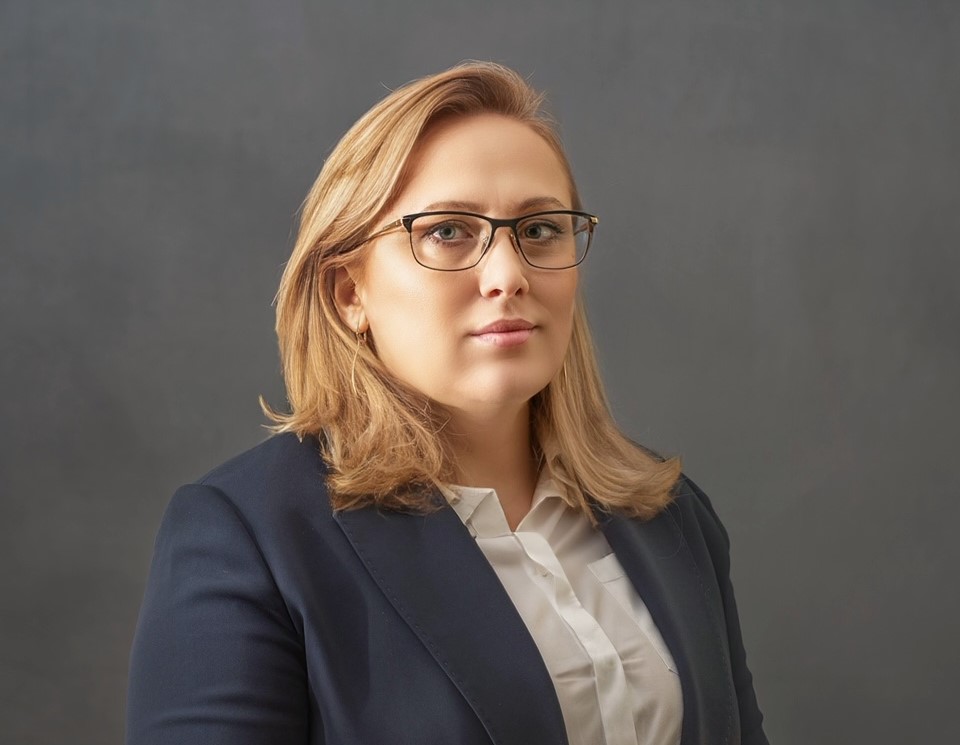Insolvency as a Crushed Table
A Short Survey on the Insolvency Institute Development
History has proven all events with basic importance to the Mankind get repeated frequently. Although it is hard for the new high-tech world to grasp the fact that somewhere once happened the same what he witnesses today, it’s actually a fact that today’s news is actually well-forgotten past.
The world crisis from the first decade of the 21st century, that started like a wave of bankrupts from the East Coast of USA, quite resembles the crisis of the 20-ties of the 20th century, and many others before it.
Basic reason why the contemporaries of the nowadays crisis are panic-stricken with what’s happening with them, is because they are extremely involved in their own problems, and have already forgotten, that they are a transient generation between past and modern times. If they want to be adequate to the today’s challenges, they should know what has been before, so can they can plan the day of tomorrow.
When, practically, did it all start? Is the economic crisis anyhow connected to the modern capitalistic societies or it first appeared with the creation of the national states in 18th and 19th c., or maybe, it’s older than we can figure out?
Even the bravest wouldn’t believe that the first economic crisis took part in the Ancient times.
Already in the Roman Empire time, the merchants were terrified by the thought that probably they would have to ‘crush their table’ and get enslaved for their debts.
For instance, up to date in the Criminal Codes of many state the debtor’s failure to execute his pecuniary obligations towards his creditors, is stated as a crime, as firstly settled the Romans. Of course, now the composition of the norms is detailed and much broader.
In the Roman Empire first was mentioned the idea of defining the content of the property mass, that should satisfy the creditors claims.
Initially, not only the property available when the insolvency procedure started, but also, the later acquired, was transferred to the creditors for full repayment of the debt. In addition, the debtor was deprived of all his property rights.
It was already later when with the institute CESSION BONORUM, the idea that the debtor should keep a minimal property necessary for his living, or as now called ‘inaccessible property’.
In that period the creditors were for the first time active in the insolvency procedure. They did not only sell the property of their debtor, but also manage and keep it before that – MISSIO IN POSSESSIONEM; a function which now is executed by a Creditors’ Comitee (Комитет кредиторов; Комитет на кредиторите) and by an approved syndic.
In the following centuries the development of Trade was steadily accompanied by the development of the Insolvency Institute.
In Medieval Italy were created the first Insolvency Courts, exactly as they are present in USA nowadays.
At the same time a new regulation of the insolvency procedure was initiated, it could already be started not only by the creditors, as it had been before, but also by the court, and even by the insolvent debtor.
In the Medieval the prototype of the rehabilitation procedure appeared, same as the one presented now in the Bulgarian Trade Law, in the German Insolvency Statute (Insolvenzordnung), in the USA Insolvency Act ( Bankruptcy Reform Act), in the Federal Insolvency Law of the Russian Federation (Федералный закон о несостоятельности) etc.
In the recent past, in 16-18th c., in UK, the criterion , defining a debtor as insolvent was legalized.
It is presumed that the debtor should have stopped the payments to his creditors (one of the criteria nowadays also).
Besides that, the jurists had to begin distinguishing several types of bankruptcy, according to the reasons, which had provoked it. The discussion of decriminalizing the unguarded bankruptcy (непредпазлива несъстоятелност) began. They even started talking about ‘conscientious’ bankruptcy ( ‘добросъвестен’ банкрут), when the bad debts were remitted.
The following survey would be one-sided and superficial, if it explored only the development of the insolvency institute in the West.
It may sound striking, but exactly in the East, in Russia, the insolvency’s legislation has the oldest tradition as a codified system of legal norms.
First Bankruptcy was regulated in 11th c. In the so called ‘ List of Karamzin’ (Kарамзинский список), rules of the personal responsibility of the debtor took place.
For instance, in cases of deliberate bankruptcy, the debtor was sold in slavery, and if it was unguarded insolvency – the debt was re-structured.
There is a number of contracts with the German cities in 13th c. in the field of insolvency.
In the Pskov Judicial Charter of 1467 (Псковская судная грамота) was set the issue of dividing the debtor’s property midst his creditors. The insolvency was regulated consequently in three other legislation collectanea in the period from 15th to 17th c.
Nevertheless, not before the first Bankruptcy Statute (Банкотский устав) was recepted, the foreign legislation, the Senate Statutes and the common law were used.
In 1800 Bankruptcies Statutes was created, in which insolvency was specialized in sub-kinds, according to the reasons, that provoked it. That ‘s why there is ‘miserable’ bankruptcy, which resulted from vis major; ‘unguarded’ bankruptcy, caused by negligence; and also deliberate bankruptcy, created by the ‘vices of the debtor’.
The last insolvency act , before the current legislation was made, was the Trade Insolvency Statute, valid till the October Revolution.
While Russia was reforming its insolvency legislation, in 19th c. two new Great Powers make first, but quite successful attempts to regulate bankruptcy in their states.
These are the young united German state, which only 6 years after its creating, made a Bankruptcy Law,called Konkursordnung and the United States, which wrote their Bankruptcy Act a decade after the Germans.
It is impressing how many common features the legislations of the three countries, Russia, Germany, USA, have in the field of insolvency.
Both in Germany , USA and in Russia , insolvency is defined as a procedure about the universal satisfaction of the creditors, distribution of the debtor’s property, and ‘a possibility for beginning a new economic activity’ .
All the three procedures take place in a court – in the United States it’s a specialized federal insolvency court – Bankruptcy Court , in Germany is the relevant Court of First Instance - Amtsgericht, and in Russia the relevant arbitrary court .The local competence in the three states is defined according to the residence of the debtor.
It is also impressive that in the legislation in all of the states provides an insolvency procedure both for legal entities and natural persons, as in the latter case the procedure has its particularities.
The natural persons’ insolvency procedure is simplified and it is aimed to be less court-regulated, unlike the companies’ procedure, where the court plays an essential part. ( Not in Russia).
In the three countries, after the natural person has completed the set requirements, a remission of debts can follow (Restschuldbefreiung; Discharge of Debtor).
In all the places the procedure starts with sending a petition to the court. As, according to the reason and the object of the insolvency procedure, it could be filed either by the debtor and the creditors, or only by the debtor.
In Germany and Russia the reasons for beginning an Bankruptcy procedure are the same, as the terms have the same meaning ‘ insolvency’ and ‘overindebtedness’. In the legislations of both states ‘insolvency’ is accepted as a state of the debtor, when he cannot execute his liquid and due pecuniary obligations and ‘overindebtedness’ ( only in cases when companies are involved) is defined as lack of sufficient amount of belongings, to ‘cover’ the obligations if the property is sold.
In USA there is a presumption of insolvency that is the same as in the Bulgarian Trade Law Insolvency is supposed to be existent, when the debtor has stopped the payments or when he can partially pay to all or to some of the creditors.
Unlike many of the European states, the Unites States count as different insolvent procedures the Liquidation, Rehabilitation and the Rescheduling of Payments.
In Russia and Germany the Rehabilitation procedure is a stage of the Insolvency Procedure, and the Liquidation is a separate procedure.
The participants in the process are the same in the three countries – a court and a syndic ( trustee – in the USA; administrator – in Russia; ‘strong’ and ‘weak’ temporary administrator in Germany).
The parties in the procedure are the debtor and the creditors, forming their Comitee, managing the process. The legal norms, regulating their rights in the insolvency procedure are the same, also as the ones in our Trade Law.
Probably, to the Bulgarian jurists it will be of a special interest the universal insolvency procedure, concerning natural persons, that’s why a special attention should be paid to it.
Consequently we will present the procedures in Germany, USA and Russia.
In the German Insolvency Statute ( Insolvenzordnung) of 1999 for the first time the institute of natural persons’ insolvency is regulated. It basically aims to legitimize the out-of-court enforcement procedure, regarding natural persons and to ease the insolvency process, that should be followed by a partial remission of the debtor’s obligations.
It is provided that if the out-of-court enforcement procedure failed to have been successfully undergone, in a 6-month-term an insolvency court procedure starts, as the petition should actually be a lawyer- issued- certificate, proving the unsuccessfully closed negotiations of managing the debtor’s obligations between the creditors and the debtor.
Other possibility of starting the insolvency procedure is with a debtor’s petition. He has the present the court the plan, according to which the creditors will be satisfied, information about his property and income, as well as, lists of the creditors and the debts.
The law permits the court-submitted-plan to be identical with the ‘out-of court’ one. The German courts even accept a ‘zero plan’, presented by a debtor , who has no property, or income and doesn’t even suggest to pay his dues. In this case, 6 years after submitting the plan to the court, the debtor is counted free of his debts.
It is necessary that the plan is approved by most of the creditors. If it is not, then officially an insolvency procedure starts.
The court procedure, concerning natural persons is the same as company one. The particularity appears exactly after finishing the procedure with a so called ‘ Remission of the obligations’. It is provided only for the ‘honest debtors’ ,the ones who did not commit a crime against the creditors; who haven’t committed abuses, concerning public funds and also the ones who haven’t been remised of debt the last 10 years.
In USA the natural persons insolvency procedure is initiated with a voluntary petition, filed by the debtor or with an ‘involuntary petition’, devised by his creditors.
There also can start a co-procedure, regarding a family – husband and wife, by them filing a Joint Petition.
Insolvency presumption is entirely valid to natural persons, as well.
In USA, like in Germany, the debtor has to present a repayment plan, but in the United States the plan could be admitted just in case the debtor has regular income. The plan itself has no effect before it’s approved by the court, which means there the out-of-court procedure is unacceptable.
But, in general, the plans in Germany n USA are alike. Application of the Remission of the debtor’s obligations institute in the United States is limited. Only a debtor who paid all his obligations as pointed in the approved plan can be remised.
In Russia, even in the definition of ‘insolvency’ , is pointed that natural persons can be subject to an insolvency procedure.
Main peculiarity between the procedures in Russia, compared to the German and the American , is that in the Russian there are no special norms, adjusting the procedure, if a natural person is involved.
There are no other differences between the three procedures. The main effect of the insolvency procedure is that the creditors are paid and the ability of the debtor is recovered.
The historical and comparative survey of insolvency is basically focused to provoke the more creative thinking of the modern man, so he gets adapted to the new events appearing in the world surrounding him.
The World Economic Crisis is a fact today; fact are also the hundreds of the bankrupt companies and insolvent persons.
The faster the states shrug off the fear of Bankruptcy, of the of the fright that their ‘table could be crushed’ , the better they will realize that insolvency is actually a part of the economy development and the more fully and properly the world experience and legal systems achievements will be applied.
In China they say that the hieroglyph for ‘crisis’ on purpose has double meaning, and it could also mean ‘a chance for a change’.
And as the history in the last 20 centuries has proven, Insolvency is more healing, than destroying the economy.
Gergana Mitalova
- Дата и час: 14 Яну 2025, 08:23 • Часовете са според зоната UTC + 2 часа [ DST ]
Insolvency Procedure
|
|
|
8 мнения
• Страница 1 от 1
Insolvency Procedure
Гергана Миталова
- advokaat
- Нов потребител
- Мнения: 8
- Регистриран на: 09 Дек 2012, 23:45
- Местоположение: София,България;Бремерхафен,Хамбург,Германия.
Re: Insolvency Procedure
- neutralen
- Активен потребител
- Мнения: 2634
- Регистриран на: 12 Фев 2012, 22:03
Re: Insolvency Procedure
Здравейте ! 
(на английски - Колайгеле ! )
)
Уважаема Gergana Mitalova,
Да не казвам голяма дума, но тук във Форума, ако не 50 %, то минимум 49 % от участниците не знаят английски език, но за сметка на това са много любопитни, поради което виждайки написания от вас текст на английски език, тръгнаха на курсове за изучаването му.
Надяваме се, че все пак вие владеете и български език и ще превдете написаното за да задоволите любопитството на цитираната част от юзърите

(на английски - Колайгеле !
Уважаема Gergana Mitalova,
Да не казвам голяма дума, но тук във Форума, ако не 50 %, то минимум 49 % от участниците не знаят английски език, но за сметка на това са много любопитни, поради което виждайки написания от вас текст на английски език, тръгнаха на курсове за изучаването му.
Надяваме се, че все пак вие владеете и български език и ще превдете написаното за да задоволите любопитството на цитираната част от юзърите
- neutralen
- Активен потребител
- Мнения: 2634
- Регистриран на: 12 Фев 2012, 22:03
Re: Insolvency Procedure
Производството по несъстоятелност представлява интерес за всички юзъри 
- neutralen
- Активен потребител
- Мнения: 2634
- Регистриран на: 12 Фев 2012, 22:03
Re: Insolvency Procedure
Insolvency is possibly the most demanding career option a professional can undertake. It is certainly one of the most challenging, involvng and rewarding, The insolvency profession is also one of the smallest - there are fewer than 2,000 licensed insolvency practitioners in the UK.
Insolvency practitioners can find themselves running businesses, constructing and negotiating deals, or investigating and advising on the viability of a business and its restructuring (and, sometimes, the integrity of the directors).
The work of the insolvency practitioner affects the lives, prospects and livelihoods of both creditors and debtors. Insolvency work is as much about people as it is about figures. Insolvency practitioners need the personality and skills to deal with angry creditors, anxious directors, distraught employees and, amongst others, hard-beaten businessmen with an eye for a bargain.
The insolvency scene is always challenging. In particular, the effects of the Insolvency Act 1986 and the attitudes of banks and other creditors mean that, more than ever, insolvency practitioners are business rescuers. Whilst much of the work done by the profession involves formal insolvency procedures, increasingly insolvency practitioners are using their skills to restructure and rescue businesses (both in the UK and abroad) without recourse to formal insolvency procedures.
Where an insolvency practitioner is appointed in a formal insolvency, the most common procedures are the liquidation of companies by a variety of routes and bankruptcies of individuals. Even in these cases, often regarded as the "end of the line" for businesses, imagination and determination are still needed to preserve as much of the businesses (and its associated jobs) as possible, or, as a last resort, to get the best possible price for its assets.
Even where a formal insolvency procedure is necessary, in many cases a positive approach to the rescue of businesses and jobs can be taken through the application of administrations, administrative receiverships and voluntary agreements.
The profession has been able to rescue increasing numbers of jobs and businesses in recent years, both because of legislative changes and the changing attitudes of creditors. Overall, some 20 per cent of insolvent businesses are rescued in one form or another, in part or in whole, and one in every six insolvent individuals enters a voluntary arrangement as an alternative to bankruptcy.
Since 1986, all insolvency practitioners have been required to be licensed by a recognised professional body (RPB) or the Department of Trade and Industry (DTI) in England and Wales, or the Department of Enterprise Trade and Investment (DETI) in Northern Ireland. An individual's licence can be revoked if the holder ceases to be a fit and proper person to act as an insolvency practitioner. Only licenced insolvency practitioners are authorised to take appointments as administratitive receivers, adminsitrators, liquidators, trustees in bankruptcy or sequestration, supervisors of voluntary arrangements, and trustees under deeds of arrangement and trust deeds.
If you have decided to make your career in this area of insolvency, you will first need to choose a route to becoming a licensed insolvency practitioner.
(ILEC)
Insolvency practitioners can find themselves running businesses, constructing and negotiating deals, or investigating and advising on the viability of a business and its restructuring (and, sometimes, the integrity of the directors).
The work of the insolvency practitioner affects the lives, prospects and livelihoods of both creditors and debtors. Insolvency work is as much about people as it is about figures. Insolvency practitioners need the personality and skills to deal with angry creditors, anxious directors, distraught employees and, amongst others, hard-beaten businessmen with an eye for a bargain.
The insolvency scene is always challenging. In particular, the effects of the Insolvency Act 1986 and the attitudes of banks and other creditors mean that, more than ever, insolvency practitioners are business rescuers. Whilst much of the work done by the profession involves formal insolvency procedures, increasingly insolvency practitioners are using their skills to restructure and rescue businesses (both in the UK and abroad) without recourse to formal insolvency procedures.
Where an insolvency practitioner is appointed in a formal insolvency, the most common procedures are the liquidation of companies by a variety of routes and bankruptcies of individuals. Even in these cases, often regarded as the "end of the line" for businesses, imagination and determination are still needed to preserve as much of the businesses (and its associated jobs) as possible, or, as a last resort, to get the best possible price for its assets.
Even where a formal insolvency procedure is necessary, in many cases a positive approach to the rescue of businesses and jobs can be taken through the application of administrations, administrative receiverships and voluntary agreements.
The profession has been able to rescue increasing numbers of jobs and businesses in recent years, both because of legislative changes and the changing attitudes of creditors. Overall, some 20 per cent of insolvent businesses are rescued in one form or another, in part or in whole, and one in every six insolvent individuals enters a voluntary arrangement as an alternative to bankruptcy.
Since 1986, all insolvency practitioners have been required to be licensed by a recognised professional body (RPB) or the Department of Trade and Industry (DTI) in England and Wales, or the Department of Enterprise Trade and Investment (DETI) in Northern Ireland. An individual's licence can be revoked if the holder ceases to be a fit and proper person to act as an insolvency practitioner. Only licenced insolvency practitioners are authorised to take appointments as administratitive receivers, adminsitrators, liquidators, trustees in bankruptcy or sequestration, supervisors of voluntary arrangements, and trustees under deeds of arrangement and trust deeds.
If you have decided to make your career in this area of insolvency, you will first need to choose a route to becoming a licensed insolvency practitioner.
(ILEC)
Адвокат: (INFJ)
https://www.16personalities.com/infj-personality
https://www.16personalities.com/infj-personality
- kalahan2008
- Активен потребител
- Мнения: 4243
- Регистриран на: 12 Фев 2008, 10:53
Re: Insolvency Procedure
Уважаеми колеги,
Статията, озаглавена " Insolvency Procedure", не претендира за висок научен стил. Надявам се да ми простите непрофесионалния език на моменти, но току-що завърших, а вече ми се иска да се хвърля в дълбоките води.
" Insolvency Procedure" е преводът ми на статията "Несъстоятелността като "разбита маса".Публикувах и българския и английския вариант на текста с надеждата да бъде прочетен от повече хора, които да ми дадат своите мнения и препоръки.
Наистина ще се радвам, ако съм провокирала някой да отиде на уроци по английски, макар че съм далеч от мисълта, че юрист може да се изживява като филолог .
.
Calahan,I'd like to thank you for the detailed information you have shared. I,myself, didn"t know that the profession I decided to deal with is actually so rare. It somehow scared me a bit, because as a recent graduate I'm still not quite convinced in my abilities, but for sure, I'm ambitious and, in a way, you fueled my ambition to go even further.
To be totally honest with everybody, and also with you Calahan, this article is one of the papers I sent so I try my chance in a Doctor Degree programme in Germany. The research topic I've chosen basically concerns Insolvency Procedures in Europe and their effect on the Capital Markets.
I hope, after completing my studies (i really don"t want to say ïf"), I'll be able to start the career you"ve talked about.
Best regards!
Поздравявам всички колеги!
Статията, озаглавена " Insolvency Procedure", не претендира за висок научен стил. Надявам се да ми простите непрофесионалния език на моменти, но току-що завърших, а вече ми се иска да се хвърля в дълбоките води.
" Insolvency Procedure" е преводът ми на статията "Несъстоятелността като "разбита маса".Публикувах и българския и английския вариант на текста с надеждата да бъде прочетен от повече хора, които да ми дадат своите мнения и препоръки.
Наистина ще се радвам, ако съм провокирала някой да отиде на уроци по английски, макар че съм далеч от мисълта, че юрист може да се изживява като филолог
Calahan,I'd like to thank you for the detailed information you have shared. I,myself, didn"t know that the profession I decided to deal with is actually so rare. It somehow scared me a bit, because as a recent graduate I'm still not quite convinced in my abilities, but for sure, I'm ambitious and, in a way, you fueled my ambition to go even further.
To be totally honest with everybody, and also with you Calahan, this article is one of the papers I sent so I try my chance in a Doctor Degree programme in Germany. The research topic I've chosen basically concerns Insolvency Procedures in Europe and their effect on the Capital Markets.
I hope, after completing my studies (i really don"t want to say ïf"), I'll be able to start the career you"ve talked about.
Best regards!
Поздравявам всички колеги!
Гергана Миталова
- advokaat
- Нов потребител
- Мнения: 8
- Регистриран на: 09 Дек 2012, 23:45
- Местоположение: София,България;Бремерхафен,Хамбург,Германия.
Re: Insolvency Procedure
advokaat, if you deal with insolvency procedure in Europe, I think you should mention Council regulation (EC) No 1346/2000 of 29 May 2000 on insolvency proceedings as well.
Адвокат: (INFJ)
https://www.16personalities.com/infj-personality
https://www.16personalities.com/infj-personality
- kalahan2008
- Активен потребител
- Мнения: 4243
- Регистриран на: 12 Фев 2008, 10:53
Re: Insolvency Procedure
I avoided mentioning the Regulation 1346/2000, because I tried to explore the insolvency procedures not only in EU,but also in USA and Russia, where it"s not applicable.
But, of course, thanks a lot for the hint!:)
To Kalahan
But, of course, thanks a lot for the hint!:)
To Kalahan
Гергана Миталова
- advokaat
- Нов потребител
- Мнения: 8
- Регистриран на: 09 Дек 2012, 23:45
- Местоположение: София,България;Бремерхафен,Хамбург,Германия.
8 мнения
• Страница 1 от 1
Назад към Discussions in English
|
|
|
Кой е на линия
Потребители разглеждащи този форум: 0 регистрирани и 21 госта








